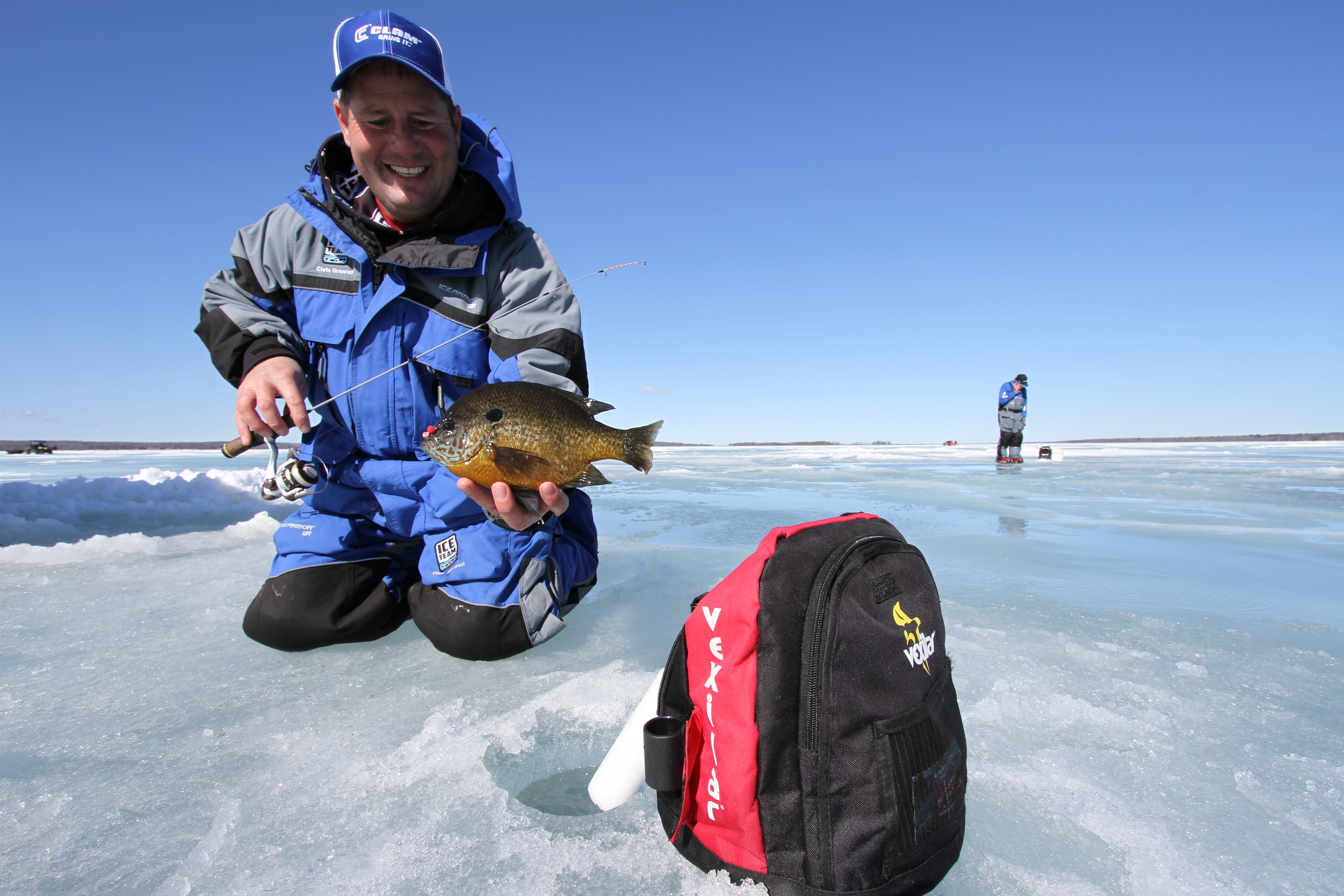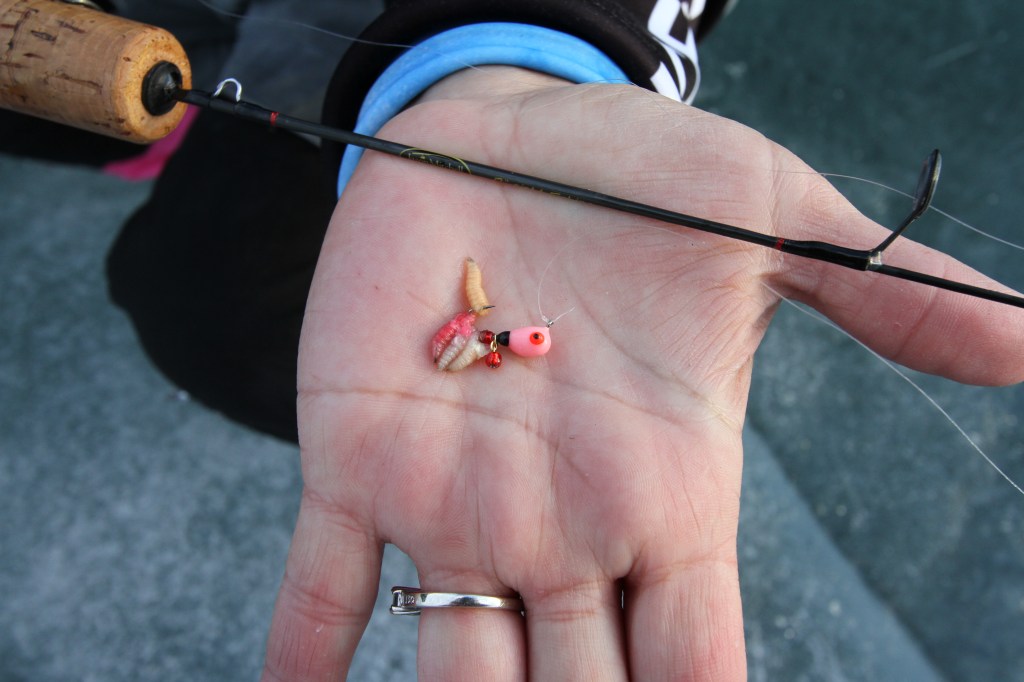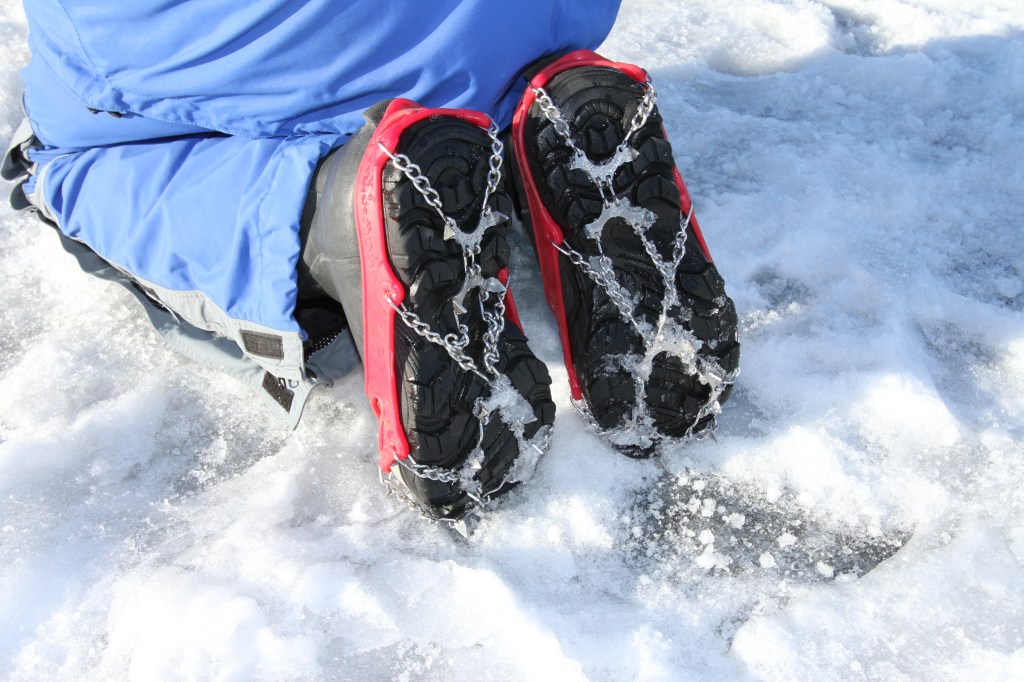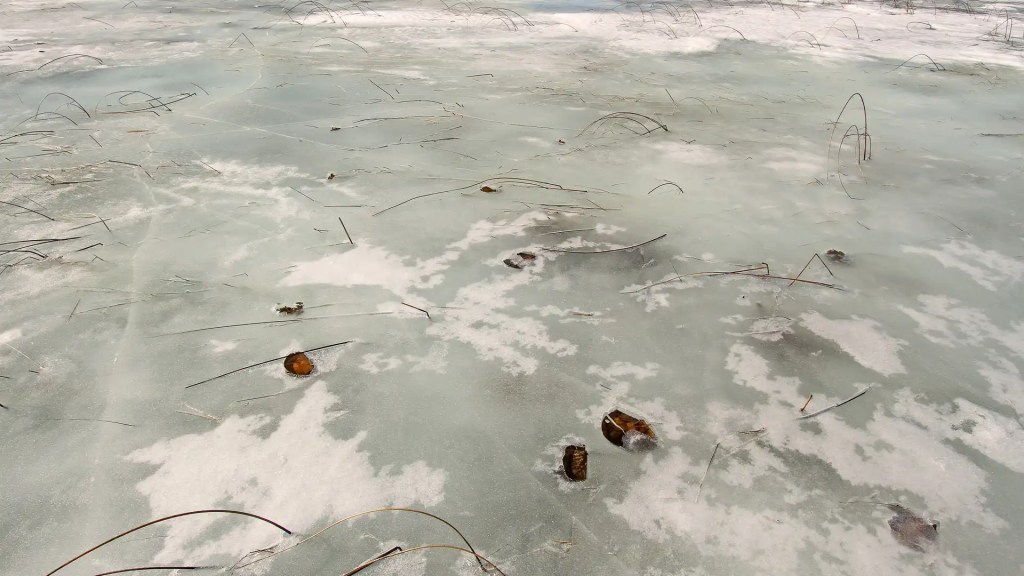
Grumpy Old Men — great movie, very funny, but it only showed a sliver of ice fishing’s potential for family-friendly fun. Fact is, anyone who follows a simple game plan and exercises appropriate caution can have a hot time on the hard water.
Like any sport, ice fishing can become as involved and expensive as you want to make it; however, Minnesota ice fishing guide Brian “Bro” Brosdahl said the entry point can be very reasonable.

Tackle: “You can find rods from $20 to $200, but I always suggest having (multiple) rods, rather than one expensive rod,” Brosdahl said. “Look for a (rod/reel) combo around that $80 mark, and then get two. If you just want to start light, get a couple of $20 rods and make sure you have good line on your reel.”
Because ice fishing is a vertical presentation with plenty of time for fish to inspect the offering, Brosdahl likes fluorocarbon for its low visibility, as well as its ability to withstand abrasion from rubbing the jagged ice edges.
Noting that he prefers 2- to 7-pound line, Brosdahl said, “The thinner the line, the better the bite. In vegetation, you don’t have to worry about line thickness as much, but don’t feed them rope. Go thin — they have nowhere to go, unless you’re in an area with sunken brush or heavy weeds where they can wrap you.”
Clothing: Thermal ice suits with articulated joints, adjustable hoods and gear pockets are nice for the harsher conditions, but on milder days, heavier pants, a comfortable shirt and a hoodie may suffice. Just be aware that moisture from melting snow and/or splashing fish can create a damp playing field, so bring something to sit on, or wear pants that won’t soak up and retain moisture.
A thermal base layer or old-school long johns, along with a beanie, help you retain body heat. Gloves are also a good idea — especially if you’re new to ice fishing. You may do OK with air temperatures, but the first time your fingers touch that frigid water, it’s an eye-opener.
For rigging and dehooking efficiency, you’ll want gloves with thumb and forefinger tips removed. Some models are made with this feature, but scissors easily modify standard gloves.
Footwear: From personal experience, I can say that you’ll feel the cold through basic hiking boots, so make sure you wear something designed to block the chill. (Tip: Thermal socks and hand warmers inside basic boots help.)
Slip and falls: Ice is slick, particularly in the absence of snow, so prevent painful injuries to hands, wrists, knees and noggins with slip-on ice spikes. Brosdahl said, “You don’t want to slip and (risk) a concussion. It’s no different than ice skating — you go down fast.”
Access portal: Reaching fish through the ice starts with drilling a hole, so don’t skimp on the auger. For maximum versatility, Brosdahl suggests a hand-cranked model with optional power drill attachment. You’ll also want a hole skimmer to remove ice that forms over open holes.
See below: A compact sonar unit with a down-view/side-view transducer carried in a handy pack with space for lures, pliers, etc., should sit right next to the ice hole. For real-time details, Brosdahl complements his sonar with a hand-held underwater camera. Dropping the camera into the hole allows him to inspect the habitat, spot baitfish and predators and watch the latter’s response to various bait presentations.
Gear container: For walks of any distance, you’ll appreciate the convenience of dragging your gear from spot to spot in a utility sled. Even if you drive onto the ice, sleds make it easy to hop from spot to spot without loading and unloading a vehicle each time you relocate.
For extreme simplicity, a 5-gallon bucket makes a handy carrier that doubles as a seat. For greater creature comfort, sleds fitted with pop-up shelters and seats will also carry the gear.

Stay safe
The first time I rode down a boat ramp and onto a frozen lake was, well, let’s just say a moment of high pucker factor. Once you get past that initial shock and realize you’re not going to die, it’s really a very engaging experience.
Of course, the fun is predicated on some basic yet critical safety protocols. First, Brosdahl points out that 4 inches is the minimum ice thickness for safe foot travel. Minnesota’s Department of Natural Resources offers additional guidelines for snowmobiles (5 to 7 inches), cars (8 to 12) and light trucks (12 to 15).
“Another recommendation: Pick a lake that’s a little shallower,” Brosdahl said. “Some lakes freeze earlier than others, so I like to pick bays off main lakes, or lakes that aren’t superdeep, because you can follow the age of the ice — it’s older on shallower (water bodies).”
To test ice thickness, make a hole with a cordless drill, ice auger or “spud bar” (metal rod with a flat tip), then insert a tape measure and hook the tip on the underside of the ice. Experienced ice anglers often mark inches along the handle of their ice skimmer (used to keep fishing holes clear).
Also, avoid bottleneck areas where current weakens ice, as well as pressure ridges created by converging ice masses. The subtle dynamics can cause dangerous fissures, typically identified by piling ice chunks and a noticeable fault line.
Respecting the safety thresholds is essential, as breaking through the ice can quickly present a nightmare scenario. The slick surface with minimal grip plus the bulky winter clothing make it very difficult to exit the water before hypothermia limits mobility.
Your first line of defense is the buddy system — avoid ice fishing alone and you’ll always have a helping hand close by. Wearing a set of connectable ice picks around your neck and keeping throw ropes handy minimizes the risk by preparing you for the unthinkable.
Fire safety: With fixed or pop-up ice shelters, portable propane heaters maintain interior comfort. Be sure to check those connections and test the device frequently to avoid possible mishaps.
Sharp stuff: Hooks plus numb fingers can equal accidental poking and piercing. Also, where pike roam, stay clear of those wicked teeth and sharp gill rakers. Carelessly placed augers present a tripping hazard, while uncovered augers left protruding from a truck bed or snowmobile rack can lead to an ER visit. Eliminate the risk by using an auger cover.
Find ’em, catch ’em
The first thing to remember is fish that live in lakes that freeze over are not surprised — this happens every year, and they know how to deal with it. That said, topography, vegetation, forage — all the rules that guide fish behavior — remain exactly the same, aside from the absence of surface activity.
Brosdahl offers this advice: “I always make a plan based on what lakes have the desired fish species. If I want to target walleye, not every shallow lake is a walleye lake. There might be more bass or pike, so you just do a little research. There’s a wealth of information online with (each state’s fisheries management agency).
“I also look at how a lake is laid out for the best point of access; some lakes have roads and trails around their perimeter. If you can access these areas near the spot, you don’t have to cross the water. Look for the steepest breaks near the shoreline because all that matters is that you have good ice where you’re fishing.”

On the ice, Brosdahl typically fishes over or near aquatic weeds — either visible through the ice (often frozen within the ice) or simply by the logical reference of shoreline vegetation that’s likely to indicate submerged cover. These are your life centers where predators search for the minnows, insects and other forage residing therein.
“If you’re fishing for bluegill, crappie and yellow perch, they’ll mill through the weeds — sometimes walleye will, if the weeds are deep enough,” Brosdahl said. “If you get on the edge of the weedline, you’re going to have pike, walleye and bass. Everything cruises the edge, while the (panfish) stay tucked so they don’t get eaten.”
A good thing about ice fishing is that you can enjoy a productive day with a relatively small bait selection. Brosdahl keeps it simple by pairing a flashy jigging-style bait, like the Northland Buck-Shot Coffin Spoon, with the more subtle presentation of a tungsten jig, like Northland’s Mud Bug or Gill-Getter. Sweetening the baits with natural accents can help close the sale.
Brosdahl said, “It doesn’t take much room to carry wax worms or ‘spikes’ (larvae) — or minnows — in a little container.





